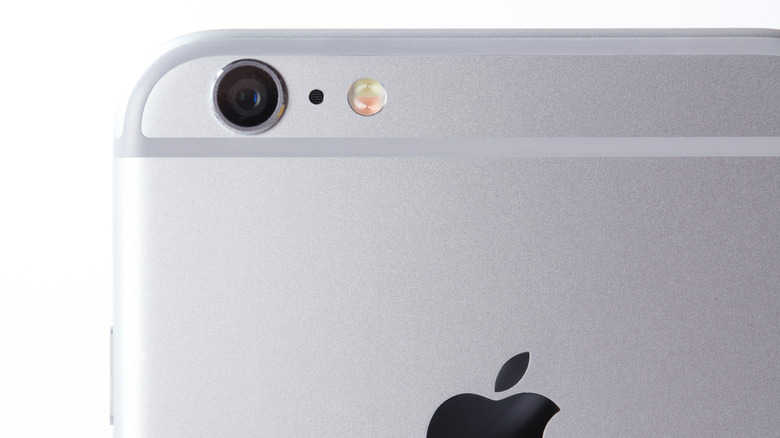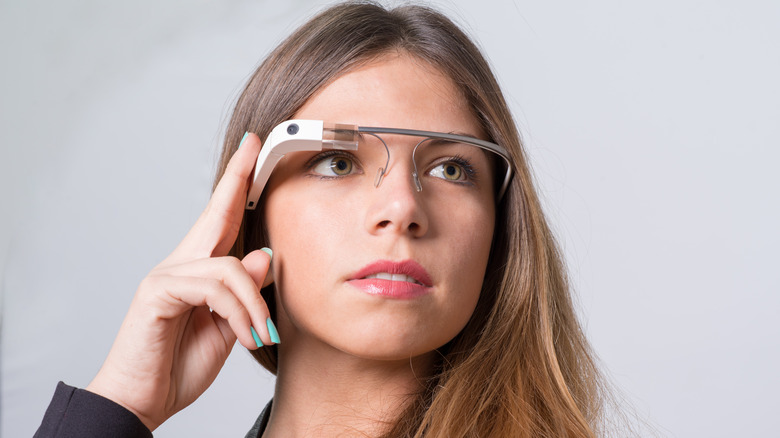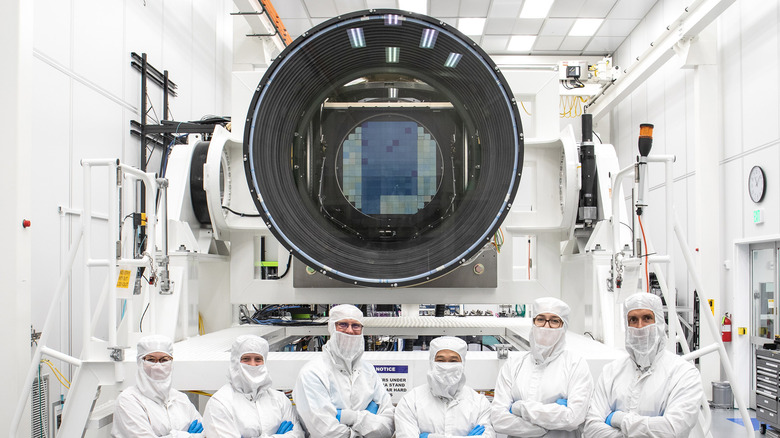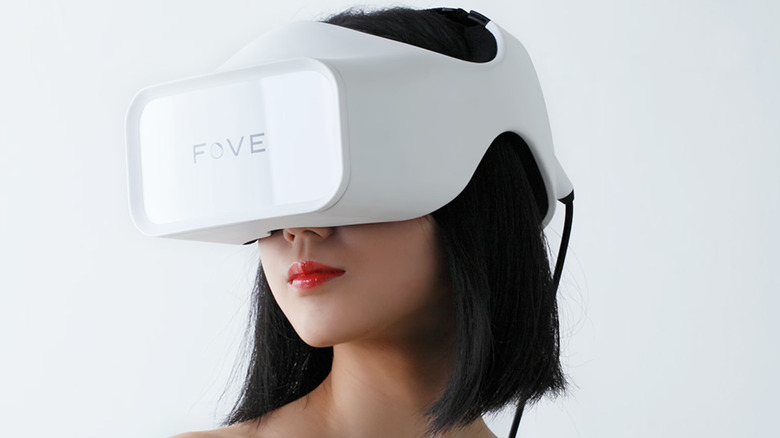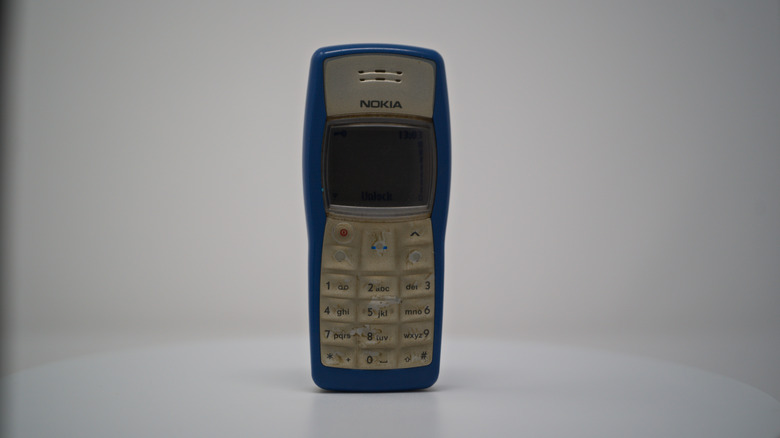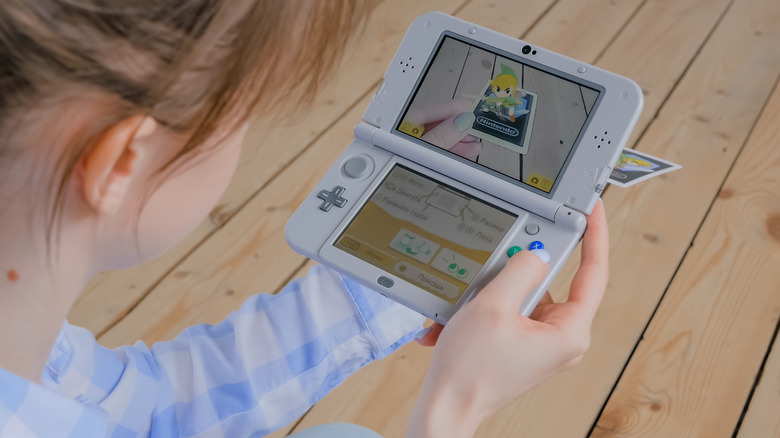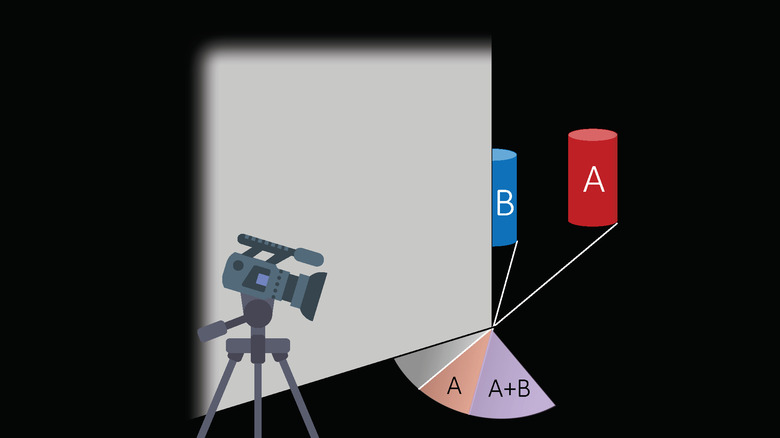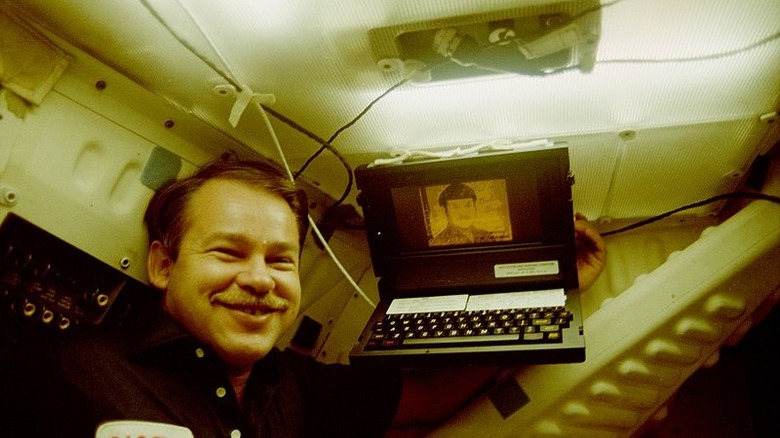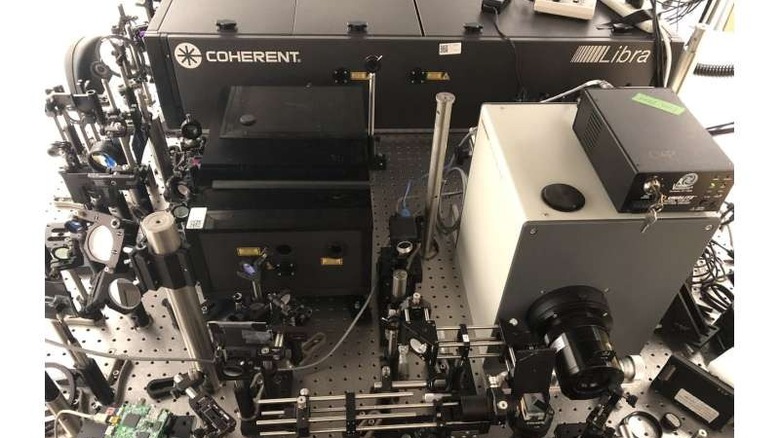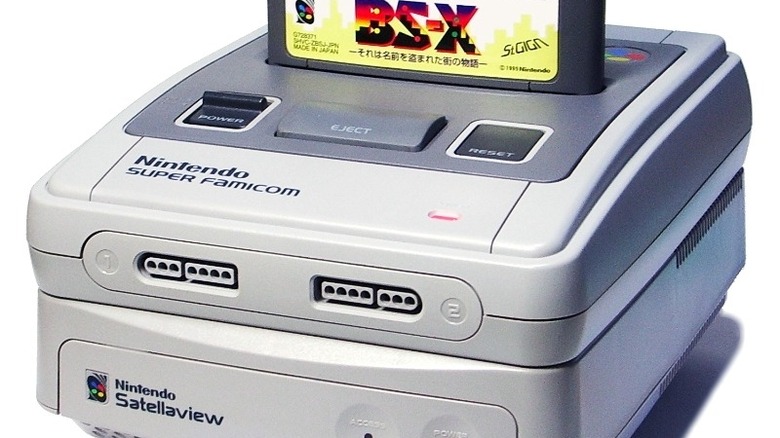10 High-Tech Gadgets You Didn't Realize Set A World Record
All world record-setting high-tech gadgets represent the achievement of everything that was once perceived as impossible. Unfortunately, not all good things are meant to last, and while some of these products are still running their peaks today, most have dwindled into nothing more than dusty pages in the history books and "remember when's" in casual conversation.
However, the long winded stories and facts associated with the gadgets are just as ingenious and captivating as the technology itself, and certain records belong to items you're probably not expecting. The highest selling smartphone and highest resolution camera isn't on an Apple or Samsung device. Cameras can now see more than what your eyes can. And the past years we've labeled as "simpler times " were actually when augmented reality (AR), virtual reality (VR), and the most common technology of today made their breakthroughs. Setting a world record is a massive feat, and it's no surprise that most of the list features major entities like Nintendo, Apple, Google, NASA, and MIT.
Fastest-selling smartphone
Given its status as a corporate giant, Apple landing on a list of world records was as certain as the sun rising from the east, and it's safe to say that the company has snagged more than one record. You know, been there, done that. Case in point: Apple's iPhone 6, which sold more than 10 million units in its first three days of release on September 19, 2014, making it the fastest selling smartphone and one of the best iPhones of all time. The entity advertised it as "Larger, yet dramatically thinner. More powerful, but remarkably power efficient," so it's hardly a wonder that people were holding their breaths and sleeping with their computers to get their hands on one of these devices.
The iPhone 6 was larger and thinner than its predecessor and boasted tons of new features. A 4.7-inch Retina display, the flashy A8 chip, and a carefully engineered seamless body were just some of the popular specs. As Apple CEO Tim Cook said in a statement following release weekend, "Sales for iPhone 6 and iPhone 6 Plus exceeded our expectations for the launch weekend, and we couldn't be happier." It was available to the public at a retail price of $199, with the inflation-adjusted amount rising to only around $250 today — much cheaper than the iPhones available to us. The price set the stage for the iPhone 6 to take its place in record-setting history.
First glasses-based wearable smart tech
If there's one thing everyone probably remembers about 2012, it's the much speculated "end of the world" on December 21, 2012. But on the sidelines, amongst whispers and shadows, ensued anticipation of something else — the Google Glass, which was brought to light in April 2012 and released to a handful of people for testing in April 2013. Apart from the little rectangular module on one side, the wearable tech looks pretty much like an average pair of glasses. It operates on voice-commands and touch and comes with a camera, speaker, microphone, and a USB port. You can take pictures, check your emails, reply to texts — almost everything you can do with an actual smartphone, but with augmented-reality instead. All you have to do is look up and the little screen comes to life.
Never heard of the Google Glass? That's not unlikely, since it was never available in stores as a commercially available product. The dream was shelved, but the Google Glass never was. It's gone down in the books as the first glasses-based wearable smart tech ever, but that's all it will ever be. The idea of a pair of glasses functioning like your smartphone was innovative, but the escalating ethical and privacy concerns along with the alarming price tag put a halt to whatever future the product may have had. The world never may not have ended, but the Google Glass certainly did, and its failure is a fascinating story to read.
Highest-resolution camera of all time
A lens greater than 5 feet, six specialized filters, a massive weight of 6,000 pounds, more than two decades of hard work. Vera C. Rubin Observatory's Large Synoptic Survey Telescope (LSST) camera doesn't just hold the record for the highest resolution digital camera in the world — it's also the largest digital camera ever built, features the largest optical lens, and has the largest sensor. One gigantic stone, four birds. The camera was built to gather data over the span of a decade at the rate of 15 terabytes per night while it sits stationary atop the observatory.
It's got a 3,200-megapixel sensor, a 9.6-square-degree field view, a 64-centimeter-wide focal plane, 15-second exposure intervals, and a total of 189 charge-coupled device sensors. If all those numbers made your head hurt, here's a little context to help you out. As of 2024, the highest resolution camera in a smartphone is only 200 megapixels, which is just 6% of the LSST's resolution. It is expected to observe 37 billion stars and galaxies over its 10-year tenure, capturing more of space than we ever have before. Next up has got to be a personal visit from an alien or two, right? Yoda would be pretty nice.
First eye-tracking virtual reality (VR) headset
Another year, another successful Kickstarter campaign, and this time we're going all the way back to 2015 to enter the ever-so-popular world of virtual reality. This creative project was FOVE Inc.'s eye-tracking VR headset, the first of its kind to be released and one of the many reasons why it's so special. FOVE's name is derived from the fovea of the eye, a little pit where visual acuity is the highest. The initial aim was to raise $250,000 for the headset, but crowdfunding got them all the way to $480,650 in less than three days.
Now, what exactly is all this "eye-tracking" ruckus? It means that the headset can sense the subtlest movements of your eye to an accuracy of less than 0.2 degrees, letting you aim with them. The device blurs the background when you focus on a certain object and allows you to make eye-contact with virtual characters. Your eyes tend to work exactly like they do in real life, so you can enjoy the VR experience without jerky head movements and unrealistic simulations, opening an entire new dimension of virtual reality.
Biggest-selling mobile phone
Look at the 10 best-selling mobile phones ever and you'll notice they're all Nokias and iPhones. In first place we have the Nokia 1100, striving long and hard to beat its formidable opponent, which is, wait for it — a variant of the same line. And to think the company fell off the charts, going from launching the biggest-selling mobile phone of all time to not even making the list of the top five smartphone manufacturers a few years later. Ironically enough, the futures of the Nokia and iPhone could not have been any more different (and leaves one to wonder: What exactly happened to Nokia?).
The Nokia 1100 has sold over 250 million units since it was launched back in 2003 (when the iPhone was nothing but — well, it was actually nothing). Following close behind is the Nokia 1110 with 248 million units sold. The 1100 was way ahead of its time, offering the timeless longevity and durability only a Nokia can achieve. It was especially popular in the developing countries owing to its pocket-friendly price tag and easy accessibility. The world of smartphones has come a long, long way since then, but the precious memory of playing snakes and ladders on an old Nokia is an experience you can't put a price on.
First augmented reality (AR) handheld gaming console
It's a well-researched and completely true story that millennials came out of the womb with a Game Boy glued to their hands. They weren't kidding when they said they made them different back then, were they? Nintendo's handheld gaming consoles were nothing short of the iPhones of today, just as popular and successful if not more. And while millennials entered adulthood and left their little gaming consoles behind, Nintendo only marched forward and eventually became the first brand to create an augmented reality handheld gaming console: the Nintendo 3DS.
Launched in the spring of 2011, the Nintendo 3DS came in a foldable, laptop-esque design complete with a touch screen, 3D screen with slider, and six AR cards. Despite being the first console to incorporate AR, most of the marketing revolved around the 3D screen that could display stereoscopic images without the use of 3D glasses. The launch was less than stellar, with sales at rock bottom and dim prospects in the future. Nintendo wasn't ready to throw in the towel though, and it dropped the price by 32% ($250 to $170) and offered 10 free NES games and 10 free Game Boy Advance games to anyone who bought the console before the price drop to increase its sales. When life gives you lemons, sell some games for free. Simple, yet brilliantly effective.
First smartphone camera to see around corners
So you know how Superman has X-ray vision and can see through walls and objects? Well, that comic book dream is a teeny step closer to reality. While we can't entirely see through walls yet, 2017 saw a remarkable development — the pairing of a smartphone camera with certain algorithms so it can see around corners. Self-driving cars, a battlefield, maybe a superhero mission? The possibilities are quite intriguing. The breakthrough for "CornerCameras" took place in MIT's Computer Science and Artificial Intelligence Lab, and the image-analysis algorithms observed reflected light patterns and shadows falling at a certain place to detect the size and layout of the moving object around the corner that might be causing them.
You can't see the object per se, or details of what it looks like, but you can roughly figure out its thickness and proximity. The object is portrayed as an individual line on a graph, with the thickness of the line inversely proportional to the distance from the camera. The greater the distance, the thinner the line. Next thing you know, we'll be the Flash, running through walled corners instead of just looking through them.
First clamshell laptop
You might not be aware a world record of such nature existed, because what exactly is a laptop if not two flat panels connected together by hinges? Well, kids, time to open your history books to chapter 1975 and 1981, when the IBM 5100 and the Osborne 1 were released, respectively. They were the first ever portable computer and the first "laptop computer," respectively, right before the birth of the first ever clamshell laptop in 1982 — NASA's GRiD Compass. It was the first to sport the design that is traditional today and featured only 512 KB of RAM. In comparison, even a toddler in today's day and age owns a device far superior to this one before they can walk and talk. But hey, it went up on the Space Shuttle, so we're definitely not complaining.
A lot of people claim this as the first "true laptop" due to its design, even though it weighed around 10 pounds and cost $8,150 back in the day. The high price kept the average consumer away from the laptop, but it was a necessary evil to support the laptop's magnesium case, bubble memory, and flat screen. It's one of the many NASA inventions still used today.
World's fastest camera
Say it out loud: 156.3 trillion frames per second. Trillion. With a capital "T." That's how fast the world's fastest camera is. Take a moment to digest that. One trillion equals 1000 billions. It has 12 zeros. Now take another moment, because this number is truly surreal. Not that we need to say it, but this camera is not for public use. Tech wizards and nerds only, folks. The camera is titled SCARF ("swept-coded aperture real-time femtophotography") and it can record events occurring in the quadrillionth of a second. One might wonder, what are you even going to do with a camera like this? Well, Jinyang Liang, a leading figure in this development, certainly had some worthy answers.
The technology — called compressed ultrafast photography (CUP) — was developed back in 2014. It then evolved to trillion-frame-per-second compressed ultrafast photography (T-CUP) and then to compressed ultrafast spectral photography (CUSP) in 2020, which brings us to where we are today. It's mostly useful to scientists so they can observe extremely fast events like the demagnetization of metal alloys and shock waves moving through living cells. In short, nothing the average person can understand, but certainly something the average person will benefit from years down the line. See you all on Mars!
First gaming console to feature a satellite modem peripheral
This story begins in 1993, when Nintendo (hi there, we see you're back on the list) paid roughly $6.7 million to become the largest shareholder for Satellite Digital Audio Broadcasting Co., aka St. Giga. The Japanese company was the world's first digital broadcast station, yet was also drowning in the deepest pits of debt due to the country's recession, the Lost Decades. Fast-forward to 1994 and the two companies made it official and gave birth to Satellaview. The satellite modem peripheral attached to the Super Famicom and allowed users to download certain games, photos, news, magazines, and other media that were broadcast over satellite in a certain period of time. It was announced at a retail price of $150 and was delivered via mail order when it was released in 1995.
Unfortunately, this tale of love was short-lived and ended abruptly in 1999, beginning with St Giga's refusal to deal with its impending debts and persistent rejection of Nintendo's debt-management plan. The relationship took an even greater hit when St. Giga failed to apply for a government broadcasting license, and Nintendo eventually said its goodbyes and cut off all ties. St. Giga made a feeble attempt at continuing with the broadcast, but eventually declared bankruptcy and merged with another company in 2003. Phew, talk about a fire that burnt fast and died even faster.
[Featured image by Muband via Wikimedia Commons | Cropped and scaled | CC BY-SA 3.0 ]

